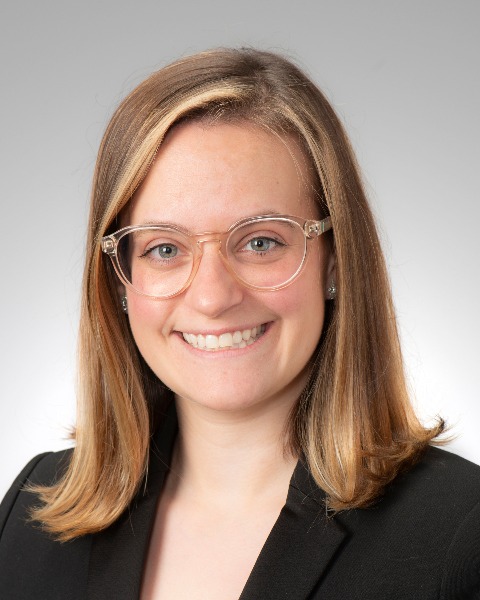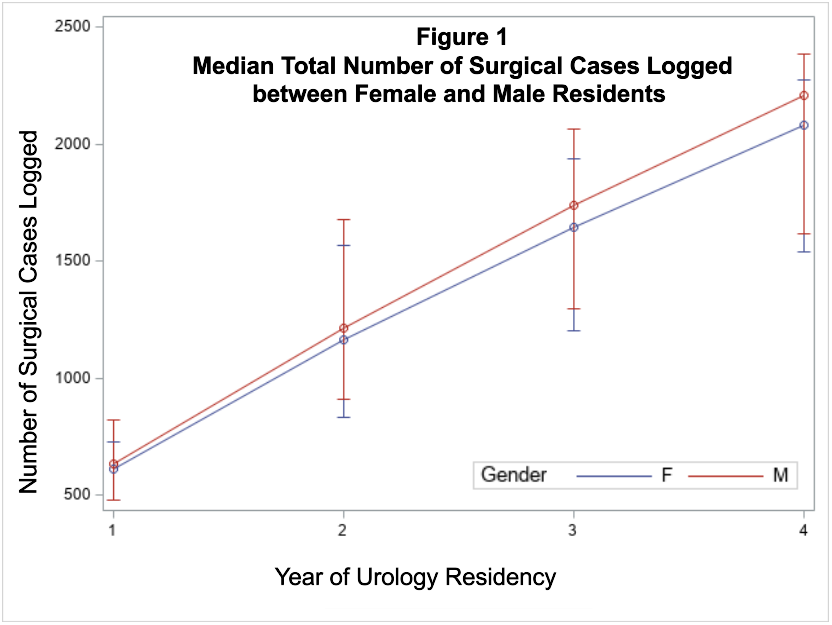Back
Poster, Podium & Video Sessions
Moderated Poster
MP10: Education Research I
MP10-08: Longitudinal Comparison of Surgical Case Logs Between Female and Male Urology Residents
Friday, May 13, 2022
1:00 PM – 2:15 PM
Location: Room 228
Kathryn A Marchetti*, Emma C Bethel, Stephanie Daignault - Newton, Charlie Ferrer, Ann Arbor, MI, Suzanne Merril, Aurora, CO, Thomas Guzzo, Philadelphia, PA, Adam Klausner, Richmond, VA, Richard Lee, New York, NY, John Lynch, Washington, DC, Jay D Raman, Hershey, PA, Adam Reese, Patrick Shenot, Philadelphia, PA, R Houston Thompson, Rochester, MN, Stanley Zaslau, Morgantown, WV, Kate H Kraft, Ann Arbor, MI

Kathryn Marchetti, MD (she/her/hers)
SUO Fellow
Poster Presenter(s)
Introduction: Multiple studies suggest that gender inequity exists within medicine. Per AUA census data, a higher percentage of female residents pursue fellowship training following residency. While there are multiple measures for the quality of training and trainee preparedness for independent practice, surgical case logs are a critical component in the assessment of both. We aim to determine if disparities exist in the number and type of surgical cases completed by female residents compared to their male peers.
Methods: ACGME surgical case logs were collected from 12 accredited urology residency programs from 2010 to 2020. The number and type of cases of each graduate were collected and recorded. This information was correlated with resident year of graduation and gender. Residents with incomplete data logs were excluded.The median, and 25th and 75th percentile number of cases were calculated by gender, and then compared between female and male residents using Wilcoxon rank sum test.
Results: A total of 378 residents were included in the study, and 71 (18.8%) were female. Female residents completed a median total of 2164 cases during residency, compared to a median total of 2259 cases (p = 0.17) completed by their male peers. Female residents completed on average 23 to 43 fewer cases per year than male residents (p = 0.18–0.25, per year) (Figure 1). There was no significant difference between female and male trainees in the median total number of cases across case types, including general urology, endourology, reconstructive surgery, oncology, pediatrics, radiology, and cystoscopy.
Conclusions: While male residents logged approximately 100 more surgical cases compared to female residents throughout residency, this difference was not statistically significant. Urology training programs and the ACGME work to provide an equal, balanced training environment for all residents. Further studies are needed to elucidate why female residents are more likely to pursue fellowship training after residency.
Source of Funding: none

Methods: ACGME surgical case logs were collected from 12 accredited urology residency programs from 2010 to 2020. The number and type of cases of each graduate were collected and recorded. This information was correlated with resident year of graduation and gender. Residents with incomplete data logs were excluded.The median, and 25th and 75th percentile number of cases were calculated by gender, and then compared between female and male residents using Wilcoxon rank sum test.
Results: A total of 378 residents were included in the study, and 71 (18.8%) were female. Female residents completed a median total of 2164 cases during residency, compared to a median total of 2259 cases (p = 0.17) completed by their male peers. Female residents completed on average 23 to 43 fewer cases per year than male residents (p = 0.18–0.25, per year) (Figure 1). There was no significant difference between female and male trainees in the median total number of cases across case types, including general urology, endourology, reconstructive surgery, oncology, pediatrics, radiology, and cystoscopy.
Conclusions: While male residents logged approximately 100 more surgical cases compared to female residents throughout residency, this difference was not statistically significant. Urology training programs and the ACGME work to provide an equal, balanced training environment for all residents. Further studies are needed to elucidate why female residents are more likely to pursue fellowship training after residency.
Source of Funding: none


.jpg)
.jpg)